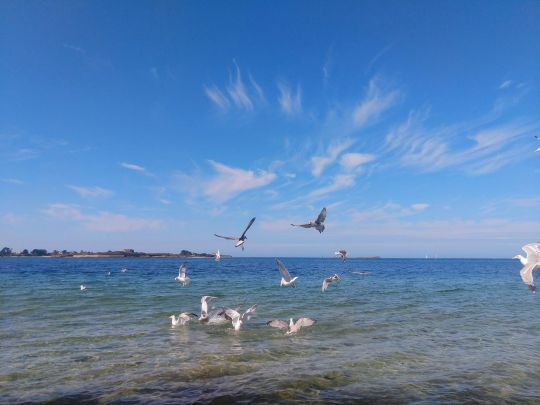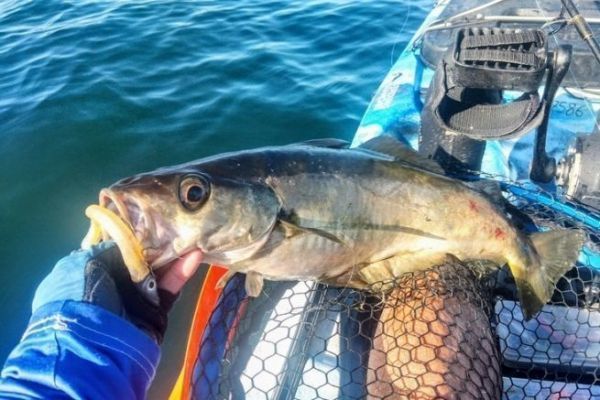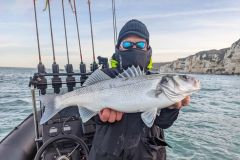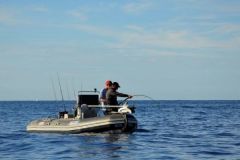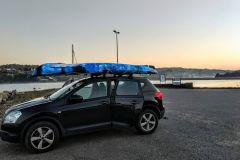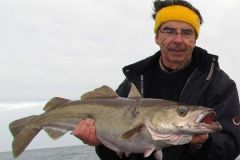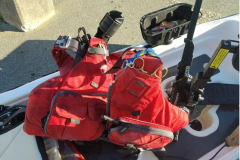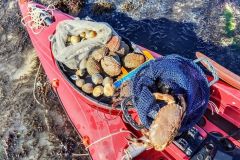Electronics are mandatory
A superb sunrise with colors that look like they've been lifted from the canvas of a great painter. The water is smooth, there's no wind, and the tidal range is low, with full tide around noon, so I'll be doing all the uphill sailing - the stage is set! After an hour's sailing towards my offshore spots, I start prospecting with my screen. On these types of fishing, electronics are essential to locate the fish. After another hour of prospecting, I finally find them.
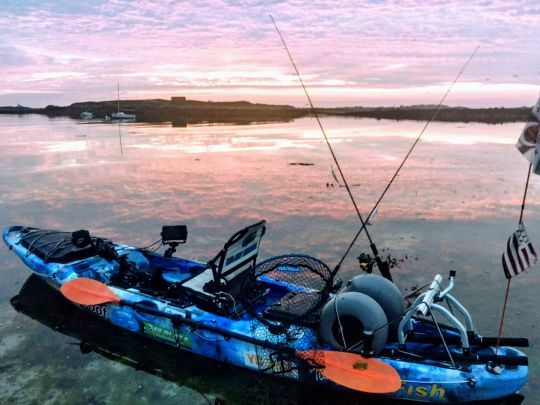
As is often the case, they are on the drop-offs at the edge of the channel. I limit my prospecting to depths of 20 to 30 meters. To comply with the 2024 regulations, when releasing fish, especially this species, it is important not to bring them up from too deep. If you do, they will have very little chance of returning in good condition. There are a few rules to follow, and it's not always 100%, but at least you limit the damage. All this is explained in pictures in the video at the end of this article, as pictures speak louder than words.
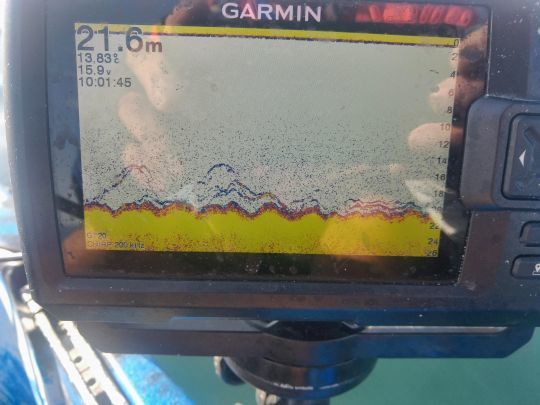
Slow trolling for pollock
The fish found are flattened on the bottom, they don't deign to follow the lure into the upper layer of water. I use Talashads as lures for these fish. A sandeel imitation I've talked about several times before. As they don't follow, for this outing, I used a method I use when fishing for cephalopods in Tataki, a slow troll.
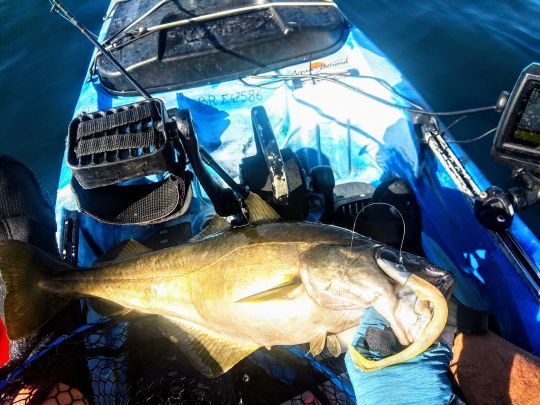
Scratch fishing on these types of bottom is synonymous with snags and therefore breakage. So I make contact with the bottom, turn the crank so that the lure doesn't touch the bottom, and then I square off the area where the detection is working, moving gently with the pedal. In this way, I keep the lure within two meters of the bottom.
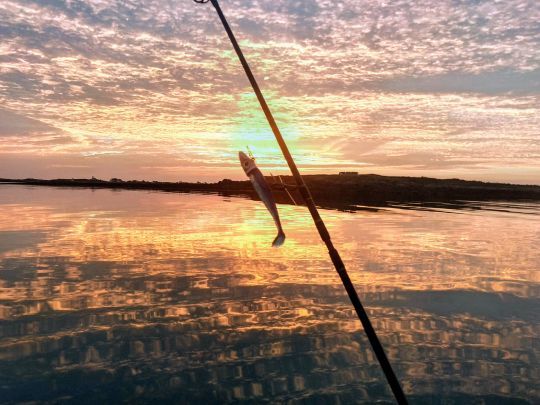
Another important clarification: you need to find the right weight, depending on the conditions, to keep the line as vertical as possible. I started catching the first fish with a 45-gram head on the third hour of the tide. Then, as the current became weaker, it was with a 30-gram head that I caught the most fish. It's another adage of kayak fishing: whatever the conditions, look for the lightest rig.
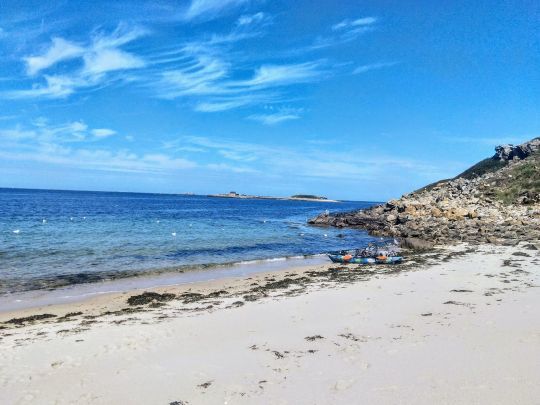
After two hours of fishing, having caught my two pretty regulation fish (my personal mesh is 60 and not the ridiculous regulation mesh) and having released the others alive, it's time to head back. I take advantage of the fine weather to do a bit of sailing among the pebbles I know by heart. A stop on a quiet little beach, away from the crowds, to have my snack, clean the fish I've kept and feed the local seagulls and gulls will bring this beautiful morning to a close. It looks like there will be more beautiful days ahead, so let's make the most of them.
